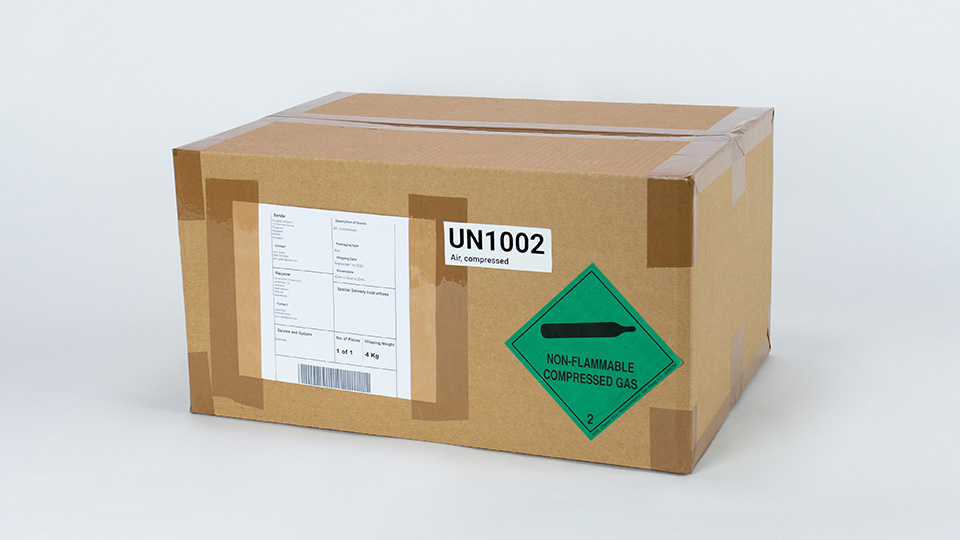Properly labelling dangerous goods boxes is essential for the safety of both people and the environment. Incorrect or missing labels can lead to serious consequences, such as transportation accidents or storage mishandling.
Dangerous goods are substances or articles that have hazardous properties which may cause harm to human health, property, or the environment. These include but are not limited to explosives, flammable liquids and solids, toxic chemicals, corrosive materials, and radioactive substances. Government agencies classify and regulate these goods to ensure safe transportation, storage, and handling.
1. The Importance of Proper Labeling for Dangerous Goods
Proper labelling of dangerous goods containers is critical for several reasons:
- Safety: Correct labels help handlers and emergency services identify hazardous materials quickly, reducing the risk of accidents.
- Compliance: Following labelling regulations ensures compliance with international guidelines, avoiding fines and shipping delays.
- Communication: Labels communicate essential information about the contents of a package, such as the type of hazard and handling instructions.
- Liability: Accurate labelling minimises legal liabilities associated with the mishandling of dangerous goods.
In essence, labelling is not just a regulatory requirement. It’s a vital practice to ensure the safe and efficient transportation of hazardous materials.
2. Understanding International Regulations
When it comes to labelling dangerous goods, several international regulations need to be considered. Here’s a brief overview:
The International Air Transport Association (IATA)
The IATA Dangerous Goods Regulations (DGR) provide guidelines for shipping hazardous materials by air. They outline specific requirements for packaging, labelling, and documentation.
The International Maritime Organization (IMO)
For sea transport, the IMO’s International Maritime Dangerous Goods (IMDG) Code is the go-to reference. It includes comprehensive rules on the classification, packaging, marking, and labelling of dangerous goods.
The United Nations (UN) Recommendations
The UN Model Regulations serve as the foundation for many international and national regulations on the transport of dangerous goods. They provide standardised guidelines for classification and labelling.
The Department of Transportation (DOT)
In the United States, the Department of Transportation’s Hazardous Materials Regulations (HMR) oversee the transportation of hazardous materials via road, rail, and air, providing comprehensive guidelines for labelling and placarding.
Understanding these regulations helps ensure that your labelling practices are up-to-date and compliant with global standards.
3. Choosing the Right Labels
Selecting the correct labels for dangerous goods is crucial. Here are some essential features and requirements to consider:
Hazard Class Labels
Hazard class labels indicate the specific type of danger posed by the goods. They are typically diamond-shaped and colour-coded according to the hazard type (e.g., flammable, toxic, corrosive).
UN Number Labels
The UN number is a four-digit identifier assigned to hazardous substances. It must be displayed prominently on the packaging and label to specify the exact nature of the goods.
Handling Labels
Handling labels provide additional instructions on how to manage the package safely. Examples include “This Side Up,” “Keep Away from Heat,” and “Fragile.”
Size and Durability
Labels should be large enough to be easily readable and made from durable materials that can withstand environmental conditions such as moisture and temperature fluctuations.
Language Requirements
Ensure that labels are written in the language(s) required by the destination country, along with any pictograms or symbols that transcend language barriers.
4. Correct Label Placement
Proper placement of labels is just as important as their content. Here are some best practices:
Visibility
Labels must be placed where they are clearly visible and not obscured by other stickers, straps, or handling marks. They should be affixed on at least one side of the box, preferably on the side with the largest surface area.
Orientation
Ensure that all labels are aligned correctly and not placed upside-down or sideways. This ensures that handlers can quickly identify and interpret the information.
Multiple Labels
If a package contains multiple hazards, each relevant label must be displayed. Arrange them to avoid confusion and ensure all hazards are easily identifiable.
Overpacking
When using overpacks (larger containers holding multiple smaller packages), ensure the exterior labels reflect the contents within. Overpacks should also include the word “OVERPACK.”
5. Tips for Consistent and Accurate Labeling
Consistency and accuracy in labelling are critical for compliance and safety. Here are some tips to ensure your labelling process is up to standard:
Training
Invest in regular training for your staff to keep them updated on the latest regulations and best practices. This includes understanding how to classify, label, and handle dangerous goods.
Quality Control
Implement a quality control system to regularly check and verify that labels are applied correctly and meet all regulatory requirements. This could involve regular audits and checklists.
Use Technology
Leverage technology such as barcode scanners and label printers to automate the labelling process. This reduces human error and ensures consistency across all shipments.
Standard Operating Procedures (SOPs)
Develop and maintain SOPs for labelling dangerous goods. Clear, step-by-step procedures help ensure that everyone follows the same process, minimizing the risk of mistakes.
Conclusion
Labeling dangerous goods boxes is essential for safety, compliance, and efficiency. Understanding international regulations, choosing the right labels, placing them correctly, and maintaining consistency can significantly reduce risks and improve your shipping operations.
Ready to improve your labelling? Book a call with one of our experts today to learn how we can streamline your dangerous goods labelling process. Your safety and compliance are our top priorities.


